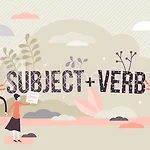| 일 | 월 | 화 | 수 | 목 | 금 | 토 |
|---|---|---|---|---|---|---|
| 1 | 2 | 3 | ||||
| 4 | 5 | 6 | 7 | 8 | 9 | 10 |
| 11 | 12 | 13 | 14 | 15 | 16 | 17 |
| 18 | 19 | 20 | 21 | 22 | 23 | 24 |
| 25 | 26 | 27 | 28 | 29 | 30 | 31 |
- Grammar
- Pronounce
- Advance
- 문법
- 받침
- hangul
- lastconsonant
- beginner
- Learning
- combinedvowel
- 발음
- hanguel
- LearningKorean
- 한국어
- doubleconsonant
- basicKorean
- basic vowels
- sentencestructure
- ㅚ
- 한글
- learnkorean
- BASIC
- ㅈ
- consonant
- 쌍자음
- korean
- gullible
- makeasentence
- Learn
- koreanalphabet
- Today
- Total
목록makeasentence (2)
Let's learn Korean
 📌 Suitable ending with '-다'
📌 Suitable ending with '-다'
Korean verbs of adverb end ‘-다’ as a standard form. It is changeable with another ending. 받다(receive) / 보다(see) / 먹다(eat) / 싸우다(fight) / 가지다(get) ‘-아/어’ comes after similar vowels. ‘-아’ comes after ‘ㅏ,ㅑ,ㅗ,ㅛ’, ‘-어’ comes after ‘ㅓ,ㅕ,ㅜ,ㅠ,ㅡ,ㅣ’. • 받 + 아 👉 받아 • 보 + 아 👉 봐(abbreviation) • 먹 + 어 👉 먹어 • 싸우 + 어 👉 싸워(abbreviation) • 가지 + 어 👉 가져(abbreviation) ‘요’ is a casual honorific ending so you can put t..
 📌 How to make Korean sentence
📌 How to make Korean sentence
The form of Korean sentence is different from with English. If you want to write, "I drink coffee." 💬 I drink coffee. S + V + O 💬나(는) 커피(를) 마셔요. S + O + V As you see, English sentence comes verb first and the object, but Korean come object first and verb last. This is the most important rule of the Korean sentence. Verb is the last. •• (는), (를) are Korean particles that make meaning of the Korea..
